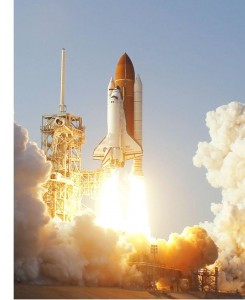WEDNESDAY, 9 MARCH 2011
The space shuttles developed by NASA are the only reusable manned spacecraft. The first mission in the shuttle program was launched on April 12, 1981, the 20th anniversary of Yuri Gagarin's first manned space flight. Since then, shuttle flights have clocked an incredible three and a half years in space.Although all five shuttles in NASA’s fleet are unmatched in their achievements, Discovery is unique among the extraordinary. It was first launched in 1984 and has now flown into space more than any other craft, circling the Earth over 5,600 times [1].
Notable flight missions have included delivering the Hubble Space Telescope into orbit, sending the Ulysses robotic probe on its way to the Sun, and making the first rendezvous with the Russian Mir Space Station, helping one-time Cold War adversaries find common ground above the Earth [2]. In its final mission, Discovery delivered the final module to the US segment of the International Space Station, as well as the first humanoid robot to fly in space, Robonaut2. It was a fitting tribute that this mission coincided with the ten-year anniversary of permanent human presence on the outpost.
More crew members have flown in Discovery than any other space vehicle, including the first female to pilot a U.S. spacecraft and the oldest person to fly in space. It was the first shuttle to venture into new territory several times. Now, Discovery is first of the shuttle fleet to retire.
Written by Robert Jones

